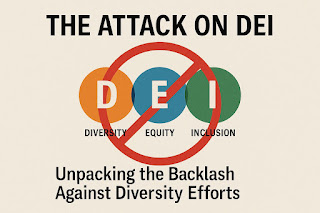In the evolving landscape of American politics, the U.S. military has become an unexpected front in the culture war.
Donald Trump and his allies have accused the Pentagon of going “woke,” criticizing diversity, equity, and inclusion (DEI) efforts within the armed forces.
This rhetoric
frames military inclusivity as a threat to combat readiness—a claim that
oversimplifies the role of culture, cohesion, and justice in military
effectiveness.
What Is Meant by “Woke” in the Military?
Trump and his supporters use the term 'woke' to disparage
policies aimed at promoting equity across race, gender, and sexuality in the
military. Initiatives like unconscious bias training, efforts to address sexual
harassment, and LGBTQ+ inclusion have been labeled distractions or political
indoctrination.
What Military DEI Programs Actually Do
DEI programs in the military aim to foster unit cohesion,
prevent discrimination, and create a force that reflects the diversity of the
nation it serves. Studies show that inclusive leadership improves team
performance and morale—critical factors for mission success. Source:
https://www.rand.org/pubs/research_reports/RR2026.html
Trump’s Messaging and Its Impact
By framing DEI as weakness, Trump appeals to voters who view
social change as a threat to tradition. His administration rolled back
protections for transgender service members and opposed gender and race-focused
training. This messaging undermines military trust in civilian oversight and
contributes to politicizing the armed forces.
Why Diversity Is a Strategic Asset
A diverse military brings a wide range of perspectives,
language skills, and cultural knowledge—essential in global operations. Leaders
like Defense Secretary Lloyd Austin argue that equity is not at odds with
readiness—it enhances it. Combatting extremism, supporting mental health, and
ensuring equal opportunity all serve operational goals.
Reframing the Conversation on Readiness
1. Recognize that equity and readiness are not mutually
exclusive.
2. Push back against the politicization of military inclusion efforts.
3. Support veterans and service members of all backgrounds.
4. Stay informed about military policy with resources like
https://www.defense.gov/Newsroom/
Accusations of a “woke military” are more about politics
than policy. The real question isn’t whether inclusion belongs in the armed
forces—it’s how we build a military that truly represents and protects all
Americans.







